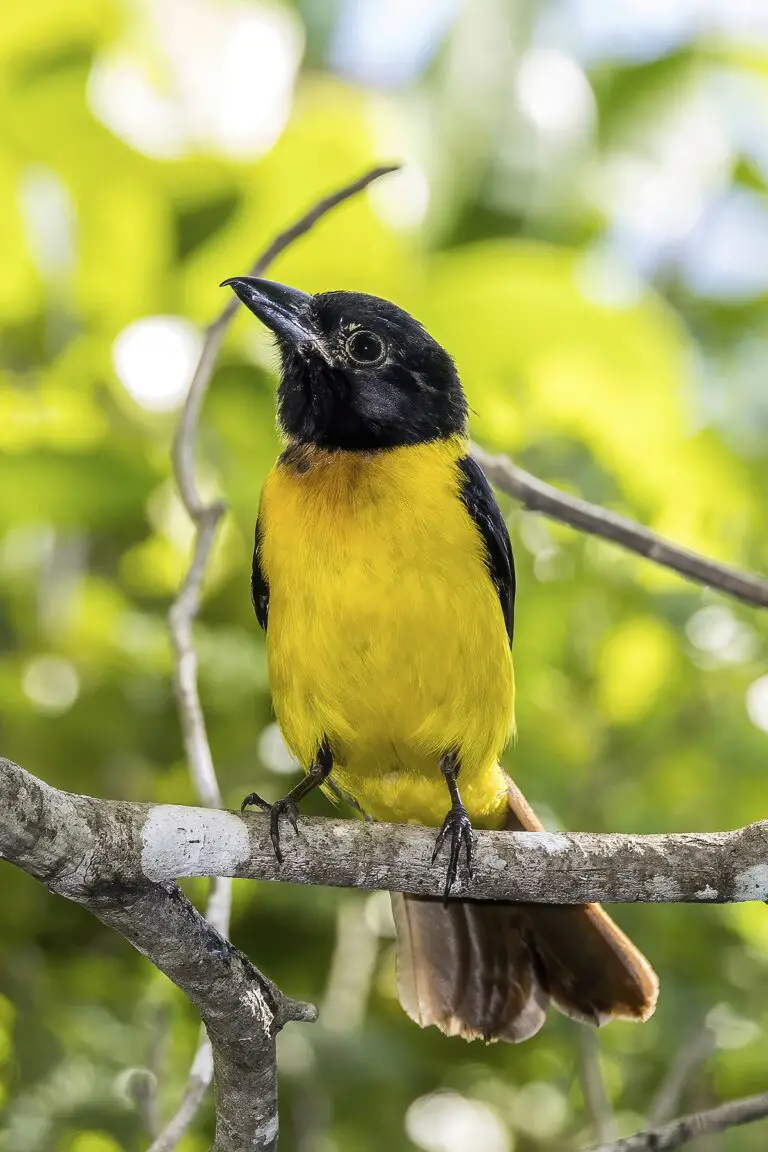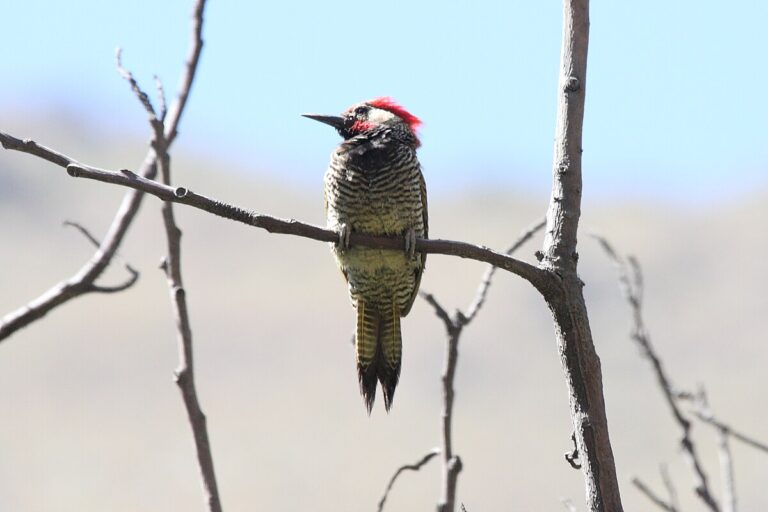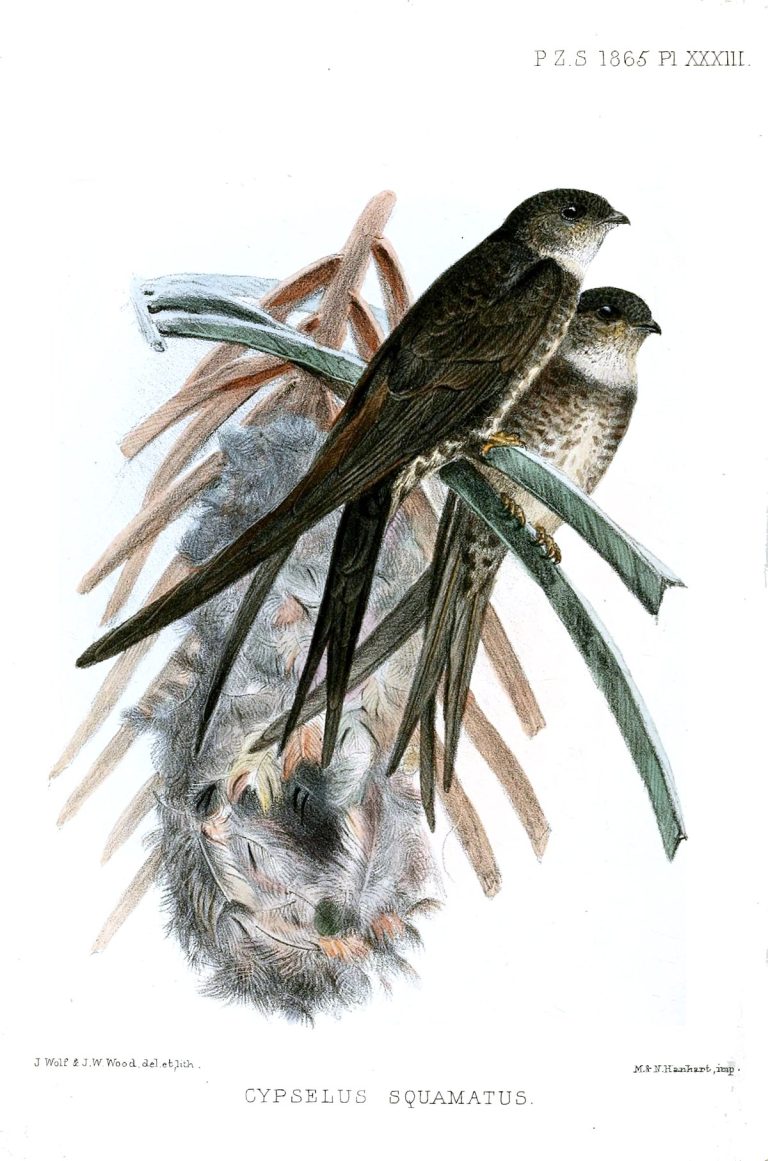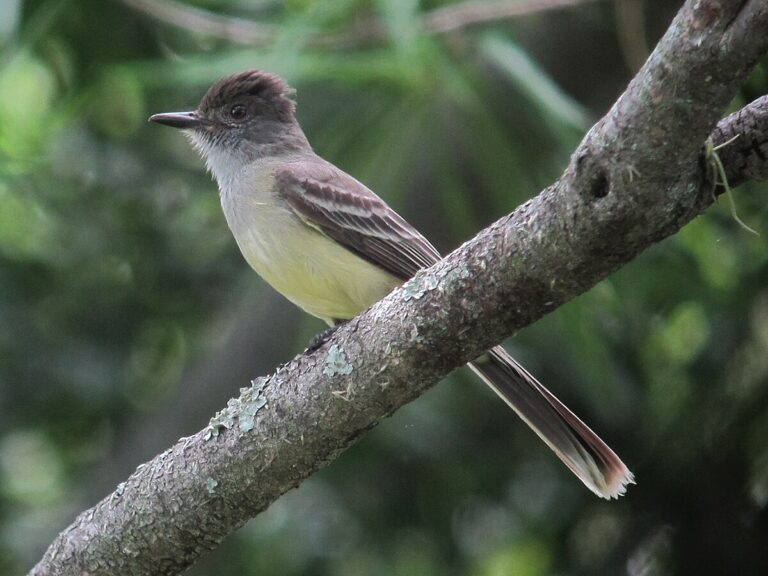Wood Duck (Aix sponsa)
“Adult male wood ducks sport a striking red eye and bill year-round!”
The Wood Duck, scientifically known as Aix sponsa, belongs to the following taxonomic classifications:
- Kingdom: Animalia
- Phylum: Chordata
- Class: Aves
- Order: Anseriformes
- Family: Anatidae
- Genus: Aix
- Species: Aix sponsa
Its conservation status is currently listed as Least Concern. Wood Ducks can be found in various regions across Central America and North America.
Wood Ducks, also known as Carolina ducks, possess several fascinating characteristics:
Fun Fact: Adult male wood ducks boast a striking red eye and bill year-round, adding to their distinctive appearance.
Estimated Population Size: The global population of Wood Ducks is estimated to be around 4.6 million individuals.
Biggest Threat: Scarce habitats pose a significant threat to Wood Duck populations.
Most Distinctive Feature: Wood Ducks are renowned for their vivid red eyes and bills, which stand out prominently.
Distinctive Features: They are adorned with colorful coats, featuring hues of brown, blue, black, white, and chestnut.
Other Name(s): Wood Ducks are sometimes referred to as Carolina ducks.
Wingspan: Their wingspan typically ranges from 26 to 29 inches.
Incubation Period: Wood Duck eggs require an incubation period of 28 to 37 days before hatching.
Diet: Wood Ducks are omnivores, consuming a varied diet.
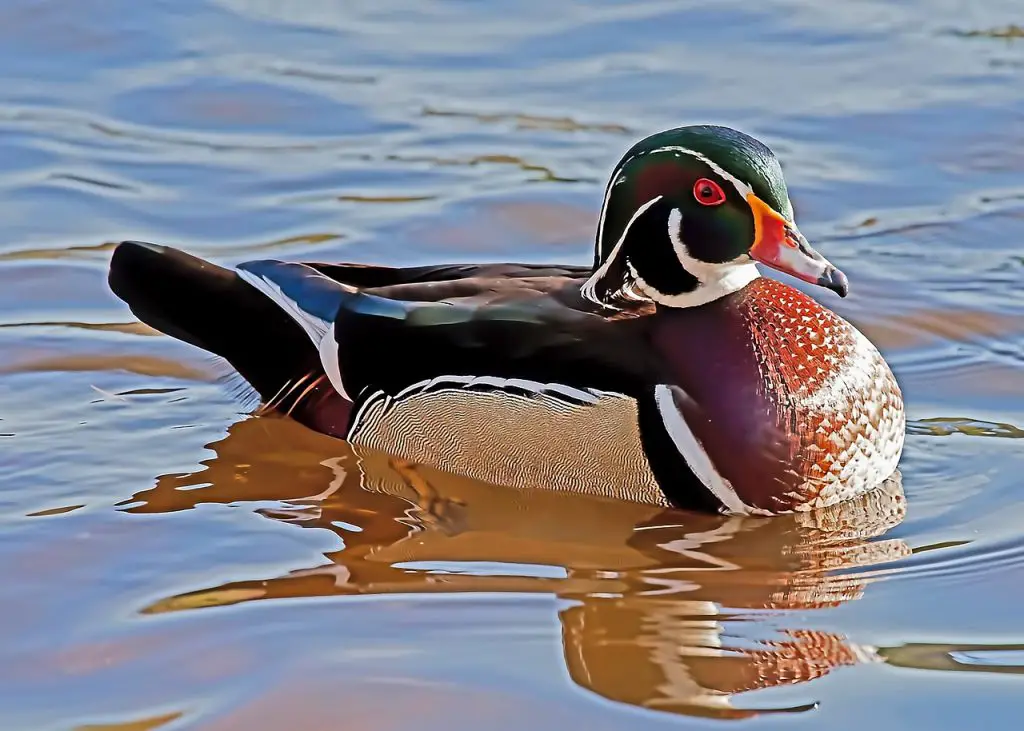
Nesting Location: They nest in tree cavities or man-made nesting boxes, showcasing their adaptability to different environments.
Migratory: Wood Ducks exhibit migratory behavior, moving between different regions as seasons change.
Physical Characteristics:
- Color: Their plumage displays a range of colors, including brown, blue, black, white, and chestnut.
- Skin Type: Covered in feathers.
- Top Speed: Wood Ducks can reach speeds of up to 34 mph.
- Weight: They weigh between 16.0 to 30.4 ounces.
- Length: Wood Ducks typically measure between 19 to 21 inches in length.
- Venomous: They are not venomous.
These features contribute to the unique beauty and adaptability of Wood Ducks in their habitats across Central America and North America.
Wood Duck Summary
The Wood Duck, a native North American waterfowl species, is known for its vibrant plumage, particularly in breeding males. Renowned as one of the most colorful waterfowl species on the continent, male Wood Ducks showcase striking features, including a bright red eye and bill. These ducks, categorized as perching ducks, frequently make use of man-made nesting boxes for breeding purposes.
Wood Duck Amazing Facts
- Nesting Behavior: Wood Ducks often engage in nest sharing or utilize nesting boxes due to the scarcity of natural nesting sites.
- Breeding Frequency: They are the only North American duck species known to regularly produce two broods per year.
- Remarkable Ducklings: Upon leaving the nest for the first time, Wood Duck ducklings display remarkable agility by jumping from heights of up to 50 feet without sustaining injuries.
- Tree Perching: Unlike many other duck species, Wood Ducks are known for their ability to perch in trees, showcasing their adaptability to various habitats and behaviors.
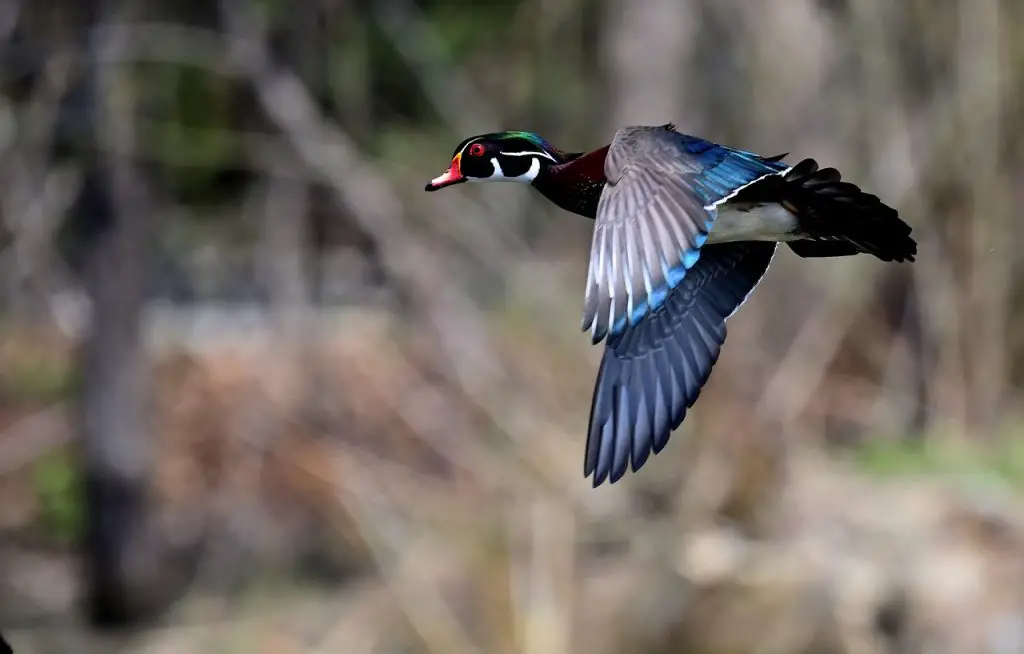
Where to Find Wood Ducks
Wood Ducks are native to North America, inhabiting regions as far north as Canada and as far south as central Mexico and Cuba. Throughout the year, regardless of the season, these ducks are typically found near water sources. They favor habitats with dense coverage, such as bottomland forests, swamps, marshes, and beaver ponds. While they prefer freshwater marshes, they are also present in coastal regions and islands.
Wood Ducks are known for nesting in tree cavities or man-made nest boxes near their preferred habitats. They readily accept man-made nesting boxes if they mimic their natural habitat. When selecting a nesting site, they look for locations with clean freshwater streams or ponds and areas suitable for foraging and perching. It’s essential for nesting boxes to have guards to protect the nest and hatchlings, and plastic should be avoided due to the risk of overheating.
In their natural environment, Wood Ducks typically nest in cavities left by decaying branches or woodpeckers. These cavities are often located high in trees, up to 60 feet above the ground, and can be as far as 1.2 miles away from water, although they prefer locations over or near water. Smaller entry holes are preferred to deter predators, although they can be several feet across.
Breeding pairs search for suitable nesting locations in the early morning. Once a cavity or nesting box is chosen, the female lines the inside with down feathers plucked from her chest to create a soft and warm nesting environment.
Wood Duck Scientific Name
The Wood Duck goes by the scientific name Aix sponsa. It falls under the class Aves and the order Anseriformes, which encompasses all species of waterfowl. Within the Anatidae family, which includes ducks, geese, and swans, the Wood Duck finds its place. Interestingly, it shares its genus, Aix, with just one other species: the Mandarin duck (A. galericulata). The term “aix” has its roots in Ancient Greek, originating from a word Aristotle used to describe an unknown diving bird species.
Additionally, the Wood Duck is commonly known as the Carolina duck.

Wood Duck Size, Appearance, and Behavior
The Wood Duck is a medium-sized species of duck, with adults typically reaching lengths of 19 to 21 inches and weighing between 16.0 and 30.4 ounces. Their wingspan spans from 26 to 29 inches.
Breeding males of the species are easily distinguishable, characterized by their vibrant green crested heads adorned with red markings and bold white lines. They sport black faces with white throats and collars, accentuating their striking red eyes and beaks. Their chestnut breasts feature pale yellow spots, reminiscent of a young fawn’s coat, while their sides display buff coloring with blue markings along the wings.
During the post-breeding season molt, males transition to their eclipse coats, which exhibit a more subdued grey-brown plumage. However, their distinctive red eyes and bills remain prominent.
Juvenile males retain their red eyes, while females do not. Regardless of sex, juveniles exhibit a grey plumage with pale markings on the face and more noticeable coloration on the wings, typically appearing blue with green shading.
Females possess a warm brown plumage and a less pronounced crest compared to breeding males. They exhibit white markings around the eyes and bold white stripes on the wings. Additionally, like juveniles, females display bright blue markings on their wings.
In flight, Wood Ducks hold their heads high, often bobbing as they soar.
Wood Ducks exhibit sexual dimorphism, with breeding males differing significantly in appearance from females.
In terms of migration patterns, there are year-round populations in Cuba and along both the western and eastern coasts of the United States. Breeding pairs from Canada and the northernmost regions of the United States may migrate as far south as Mexico for wintering, with several wintering locations corresponding to the western year-round populations.
Wood Duck Diet
The Wood Duck maintains a flexible omnivorous diet, although it predominantly consumes plant matter. While it does consume animal matter, the majority of its diet consists of plant-based foods, typically of aquatic origin. However, in instances where aquatic plants and animals are scarce, Wood Ducks will also forage on dry land.
When foraging, Wood Ducks often dip their heads beneath the water’s surface to capture aquatic prey.
Their diet includes a variety of items such as acorns, blackberries, duckweed, millet, smartweed, soybeans, panic grass, waterlily, water primrose, wild cherries, beetles, caterpillars, flies, isopods, and snails. They consume these foods based on availability and seasonality, showcasing their adaptability to different food sources.
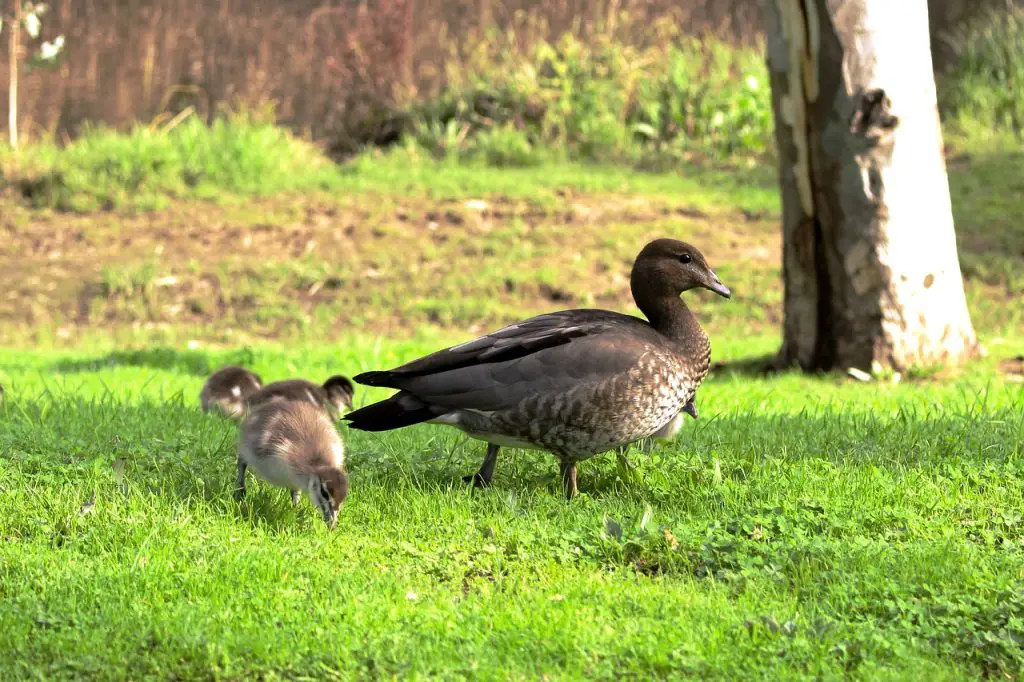
Wood Duck Predators and Threats
During the late 19th century, the Wood Duck population experienced significant declines due to hunting pressure. Although conservation efforts have led to improvements, this species remains a popular game bird and is still hunted annually. In fact, it ranks as the second-most hunted duck, following the mallard.
One of the primary threats to Wood Duck populations is habitat loss. Given their reliance on specific tree cavities for nesting, suitable nesting locations can be limited. However, the introduction of man-made nest boxes has proven to be a valuable solution to address this concern.
Wood Ducks also face predation from various animals. Some of their predators include owls, snakes, raccoons, foxes, coyotes, and hawks. These predators pose significant threats to Wood Duck populations, particularly during nesting and vulnerable stages of their lifecycle.
Wood Duck Reproduction, Babies, and Lifespan
Wood Ducks typically lay one to two broods each year, with each brood containing a variable number of eggs, ranging from 6 to 16. The incubation period for these eggs lasts from 28 to 37 days. Once the ducklings hatch, they are born alert and covered in a full-down coat. Remarkably, within just a day of hatching, they are capable of jumping down from the nesting cavity. The nesting period for Wood Ducks spans from 56 to 70 days.
Interestingly, Wood Ducks are known to engage in intraspecific brood parasitism or egg dumping. In this behavior, females will lay their eggs in the nest of another female, essentially “dumping” their eggs for the other to raise. This can result in nests containing an unusually high number of eggs, sometimes reaching up to 29 eggs, far exceeding the typical maximum of 16.

Wood Duck Population
Despite facing various threats to their population, the Wood Duck is currently classified as a species of least concern. The global breeding population is estimated to be approximately 4.6 million individuals. While challenges such as habitat loss and hunting persist, conservation efforts and sustainable management practices have helped maintain stable populations of this iconic waterfowl species. Continued monitoring and conservation measures are essential to ensure the long-term well-being of Wood Duck populations in their native habitats.
Last Words…
The Wood Duck stands as a remarkable species of waterfowl, renowned for its vibrant plumage, adaptable nature, and intriguing behaviors. Despite facing historical declines due to hunting and ongoing threats such as habitat loss, this species has resiliently maintained stable populations. Classified as a species of least concern, with a global breeding population estimated at around 4.6 million individuals, the Wood Duck serves as a testament to the effectiveness of conservation efforts and the importance of habitat preservation. However, continued vigilance and conservation initiatives are crucial to safeguarding the future of this iconic duck species for generations to come.
